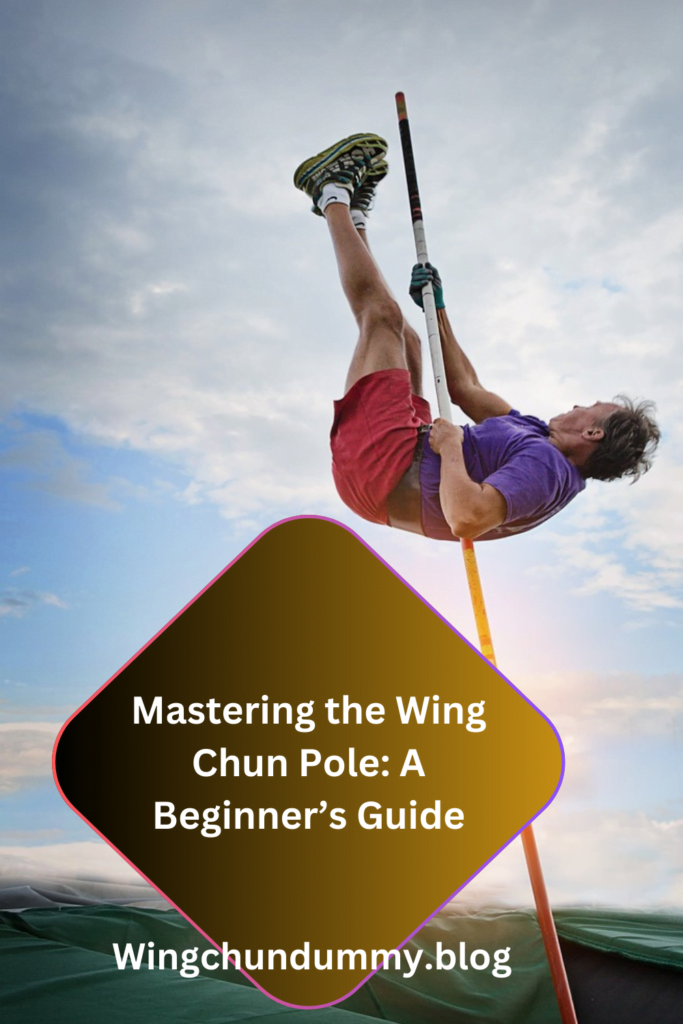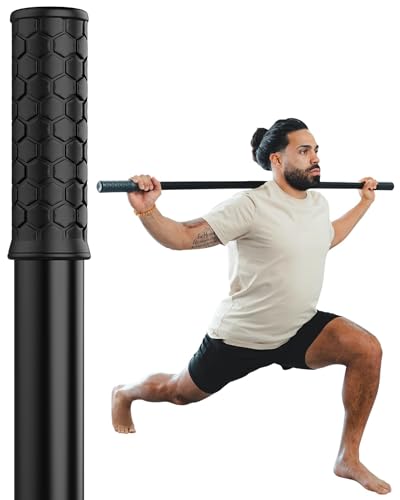The Wing Chun Pole, traditionally known as the ‘Luk Dim Boon Kwun’ or ‘Six and a Half Point Pole,’ stands as a cornerstone in the arsenal of Wing Chun martial arts.
Historically, this weapon traces its roots back to ancient Chinese martial traditions, serving not only as a tool for combat but also as a means for practitioners to refine their skills and enhance their understanding of martial principles.
The pole’s significance in Wing Chun extends beyond mere physical training; it embodies the essence of precision, control, and fluidity that the martial art is renowned for.
Traditionally, the Wing Chun Pole was employed in both offensive and defensive maneuvers, providing practitioners with a versatile weapon capable of delivering powerful strikes and effective blocks.
Its length and weight demand a high level of skill and coordination, ensuring that only those dedicated to mastering its techniques could wield it effectively.
The pole’s design and usage are deeply interwoven with the core principles of Wing Chun, emphasizing economy of motion, centerline theory, and simultaneous attack and defense.
Learning to use the Wing Chun Pole offers numerous benefits for martial artists.
It strengthens the practitioner’s stance, enhances their spatial awareness, and improves their ability to generate power through proper body mechanics.
Moreover, training with the pole hones one’s reflexes and timing, essential attributes for any martial artist.
The physical and mental discipline required to master this weapon translates into a deeper understanding of Wing Chun’s fundamental concepts, making it an invaluable component of a well-rounded practice.
The integration of the Wing Chun Pole with other techniques and forms is seamless, allowing practitioners to apply the principles learned from pole training to their empty-hand techniques and vice versa.
This holistic approach ensures that the skills developed through pole training are not isolated but rather complement and enhance the overall Wing Chun practice.
As we delve deeper into the specifics of mastering the Wing Chun Pole, it is crucial to appreciate its historical context, traditional applications, and the myriad benefits it offers to dedicated practitioners.

Choosing the Right Pole
When embarking on your journey to master the Wing Chun pole, selecting the appropriate pole is a critical first step.
The type of pole you choose can significantly impact your training efficacy and safety.
Factors such as material, length, and weight must be meticulously considered to ensure the pole is suitable for your skill level and physical capabilities.
Wing Chun poles are typically made from various materials, including wood, rattan, and metal.
Wooden poles, often crafted from hardwood like oak or ash, are renowned for their durability and traditional appeal.
They offer a solid feel and are ideal for those who prefer a traditional training experience.
Rattan poles, on the other hand, are lighter and more flexible, making them suitable for beginners who need to develop their strength and technique gradually.
Metal poles, while less common, are extremely durable and require a higher level of control and strength, making them more suitable for advanced practitioners.
Length and weight are equally important considerations.
The standard length for a Wing Chun pole ranges between 8 and 12 feet.
A longer pole provides more leverage and reach, which is beneficial for practicing extended movements.
However, it also requires greater control and strength.
Beginners may find a shorter pole more manageable as they develop their skills.
The weight of the pole should also align with your current strength level.
Lighter poles are easier to handle and can help prevent strain or injury.
While heavier poles can enhance strength training once basic techniques are mastered.
Proper maintenance of your Wing Chun pole is essential to ensure its longevity and your safety.
Regularly inspect the pole for any cracks or splits, especially if it’s made of wood.
Applying a light coat of oil can help preserve wooden poles, preventing them from drying out and becoming brittle.

For rattan poles, ensure they are stored in a cool, dry place to prevent mold or mildew.
Metal poles should be checked for rust and cleaned with a suitable anti-corrosive agent if necessary.
Basic Grips and Stances
The foundational aspects of mastering the Wing Chun Pole begin with understanding the basic grips and stances.
Proper hand positioning, body alignment, and footwork are crucial for achieving stability and control, which are essential for effective practice and progression.
Firstly, the grip on the Wing Chun Pole must be firm yet flexible.
The thumb should rest lightly along the pole.
While the index and middle fingers provide the primary grip, allowing for fluid motion and control.
The remaining fingers should wrap gently around the pole, ensuring the hand remains relaxed but responsive.
This grip is critical for both striking and defensive maneuvers, as it allows for quick adjustments and maintains the pole’s balance.
Body alignment plays a significant role in Wing Chun.
The practitioner’s stance should be grounded, with feet shoulder-width apart to distribute weight evenly.
The knees should be slightly bent, providing a stable base.
The torso must remain upright, with the spine straight and shoulders relaxed.
This posture not only enhances stability but also facilitates smooth movements and quick direction changes.
In terms of footwork, the basic stance involves positioning one foot slightly forward, creating a natural front-back alignment.
The leading foot should point straight ahead, while the back foot turns outward at a slight angle.
This positioning ensures a balanced and flexible stance, crucial for both offense and defense.
The weight should be evenly distributed, allowing for easy transition between forward and backward movements.
Clear and precise execution of these grips and stances is vital for beginners.
Visual aids such as images or diagrams can significantly enhance understanding by providing a concrete reference.
By mastering these basic elements, practitioners lay a strong foundation for advancing their skills with the Wing Chun Pole.
Ensuring they can perform techniques with precision and confidence.
Essential Techniques and Movements
The Wing Chun Pole, also known as the Luk Dim Boon Gwun, is a foundational weapon within the Wing Chun martial arts system.
Mastering its essential techniques and movements is crucial for any practitioner.
Beginners should first familiarize themselves with the core techniques, such as thrusts, strikes, and blocks.
Each of these movements requires precision and efficiency, hallmarks of Wing Chun’s philosophy.
One of the primary techniques is the thrust.
To execute a proper thrust, start by gripping the pole firmly with both hands, maintaining a shoulder-width stance.
Extend the pole forward in a straight line, ensuring your body remains aligned.
A common mistake is overextending the arms, which can lead to loss of control and balance.
Focus on keeping the motion smooth and controlled.
Next, strikes are fundamental in Wing Chun Pole training.
A typical strike involves swinging the pole horizontally or vertically to hit an opponent.
Begin by holding the pole with your dominant hand slightly forward.
Rotate your hips and shoulders to generate power, allowing the pole to follow through naturally.
Avoid excessive force; the key is to deliver a precise and efficient strike.
Blocks are equally important for defense.
To block effectively, position the pole between yourself and the incoming attack.
Hold the pole with both hands, using your body to absorb and redirect the force.
One common error is relying solely on arm strength, which can lead to ineffective blocks.
Instead, use your entire body to create a solid defense.
The principles behind these movements emphasize the importance of precision and efficiency.
Wing Chun Pole techniques are designed to maximize impact while minimizing energy expenditure.
Practitioners should strive for fluidity in their movements, maintaining a balance between offense and defense.
By focusing on these core techniques, beginners can develop a strong foundation in Wing Chun Pole and progress to more advanced skills.
Training Drills and Exercises
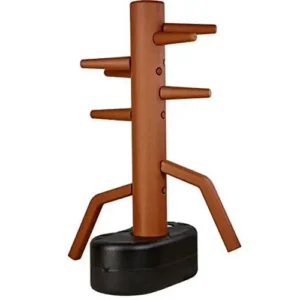
The Wing Chun Pole, or “Luk Dim Boon Kwun,” is an essential weapon in the Wing Chun arsenal, offering practitioners the opportunity to develop strength, coordination, and precision.
Effective training requires a structured approach, integrating a series of drills and exercises that progressively build one’s proficiency.
Below, we outline several key drills that can help beginners develop their skills with the Wing Chun Pole.
Basic Stance and Grip: Begin by mastering the basic stance and grip.
Stand with feet shoulder-width apart, knees slightly bent.
And hold the pole with both hands, ensuring a firm yet flexible grip.
The dominant hand should be positioned near the end of the pole, while the other hand should be placed approximately one-third of the way down.
Thrusting Drills: The thrust is a fundamental movement in Wing Chun Pole training.
Practice thrusting the pole forward in a straight line, focusing on generating power from your core and maintaining precision.
Start slowly, gradually increasing speed as your control improves.
Perform sets of 10-15 thrusts, aiming for three sets per session.
Blocking Drills: Blocking with the Wing Chun Pole requires timing and coordination.
Practice by imagining an opponent’s strike and using the pole to deflect it.
Focus on the correct angle and position to ensure an effective block.
Perform 10-15 blocks per set, aiming for three sets each session.
Rotational Drills: Develop wrist and forearm strength by practicing rotational drills.
Hold the pole vertically and rotate it in small, controlled circles using your wrists.
Begin with 30-second intervals, gradually increasing duration as your strength builds.
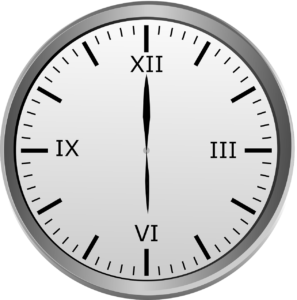
Footwork Integration: Combine pole techniques with footwork drills.
Practice moving forward, backward, and laterally while maintaining control of the pole.
This integration enhances coordination and ensures that movements are fluid and effective during actual combat scenarios.
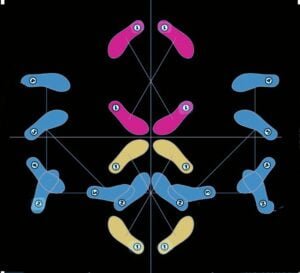
Suggested Training Schedule: For beginners, a balanced training schedule is crucial.
Aim to practice 3-4 times per week, dedicating 30-45 minutes per session.
Begin each session with a warm-up, followed by focused drills, and conclude with a cool-down period.
Track your progress by noting improvements in strength, speed, and precision over time.
By consistently practicing these drills and adhering to a structured training schedule.
Beginners can develop a solid foundation in Wing Chun Pole techniques, setting the stage for more advanced training in the future.
Common Challenges and How to Overcome Them
Mastering the Wing Chun Pole, also known as the “Luk Dim Boon Kwun,” presents several challenges for beginners.
One of the most common difficulties is maintaining balance while executing techniques.
The long and heavy nature of the pole demands a strong and stable stance.
Practitioners often struggle with shifting their weight effectively, which can impact their overall stability.
To address this, it is crucial to focus on foundational stances such as the “horse stance” and the “bow stance.”
Regular practice in these positions will build the necessary leg strength and core stability.
Another significant challenge is achieving a proper grip on the pole.
The correct grip is essential for both control and power.
Beginners may find it difficult to hold the pole firmly without tensing their muscles excessively.
The key is to maintain a relaxed yet secure grip, allowing for fluid movements.
Training with lighter poles initially can help practitioners develop the right muscle memory and hand positioning.
Accuracy in striking and blocking with the Wing Chun Pole is another area where beginners often encounter difficulties.
Precise movements are integral to the effectiveness of techniques.
Practitioners should start by practicing basic strikes and blocks slowly, focusing on the correct angles and distances.
Over time, increasing speed and incorporating drills that simulate real combat scenarios will enhance accuracy.
Mental focus and persistence are vital in overcoming these challenges.
Wing Chun Pole training can be physically demanding and mentally taxing.
It is common for beginners to feel frustrated or overwhelmed.
Developing a mental strategy that includes setting short-term goals, visualizing successful techniques.
And practicing mindfulness can help maintain focus and motivation.
Additionally, seeking feedback from experienced instructors and peers can provide valuable insights and encouragement.
By addressing these common challenges with a structured approach.
beginners can make steady progress in mastering the Wing Chun Pole.
Consistent practice, along with a focus on balance, grip, accuracy, and mental resilience, will ultimately lead to proficiency in this traditional martial art weapon.
Integrating Pole Techniques with Empty Hand Forms
Integrating Wing Chun Pole techniques with empty hand forms is crucial for developing a comprehensive understanding of this martial art.
The Wing Chun Pole, or Luk Dim Boon Kwun, is not just an isolated weapon practice but an extension of the principles found in empty hand techniques.
This integration ensures that practitioners can seamlessly transition between armed and unarmed combat, enhancing their adaptability and combat efficiency.
One fundamental way to integrate pole techniques is through the application of similar principles such as structure, centerline control, and efficient energy use.
For instance, the concept of maintaining a strong structure is essential in both empty hand forms and pole work.
The stance and body alignment required to effectively wield the pole mirrors the foundational stances in empty hand forms like Siu Nim Tau and Chum Kiu.
Practitioners should focus on maintaining these principles consistently, whether they are performing a Tan Sao or executing a pole thrust.
Moreover, centerline theory, a core tenet of Wing Chun, is equally applicable to pole techniques.
When practicing with the pole, maintaining control of the centerline allows for effective defense and offense, similar to empty hand techniques.
Drills that combine empty hand movements with pole strikes, such as transitioning from a punch to a pole thrust, can help practitioners internalize this principle.
This holistic approach ensures that the skills are transferable and reinforces the underlying mechanics of Wing Chun.
Incorporating pole work into regular Wing Chun practice sessions can also enhance a practitioner’s coordination and timing.
For example, combining movements from the Biu Jee form with pole techniques can create complex drills that challenge and improve reflexes.
Practitioners should aim for fluid transitions.
Ensuring that the shift from an empty hand form to a pole technique is smooth and maintains the integrity of both practices.
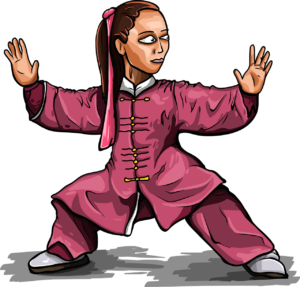
Ultimately, the seamless integration of Wing Chun Pole techniques with empty hand forms creates a more versatile and well-rounded martial artist.
By understanding and applying the same principles across both domains.
Practitioners can develop a more cohesive skill set that enhances their overall Wing Chun practice.
Advanced Tips and Resources for Further Learning
Having mastered the basics of the Wing Chun Pole, also known as the “Luk Dim Boon Gwun,”.
Many practitioners seek advanced techniques and resources to further hone their skills.
This section aims to guide you through advanced tips, recommend indispensable resources, and emphasize the importance of continual learning under qualified instruction.
To advance your Wing Chun Pole techniques, it is crucial to focus on refining your foundational movements.
Precision and fluidity in your actions are key.
Practicing with a partner can significantly enhance your understanding of timing, distance, and power application.
Engaging in drills that simulate real combat scenarios will also improve your adaptability and reaction time.
Another advanced tip is to incorporate strength and conditioning exercises into your training regimen.
The Wing Chun Pole is not just about technique; physical endurance and strength play pivotal roles in executing powerful and effective movements.
Core exercises, grip strength training, and cardiovascular workouts can provide the physical foundation necessary for advanced techniques.
For those looking to deepen their understanding, several resources are available.
Books such as “Wing Chun Kung Fu: Traditional Chinese Kung Fu for Self-Defense and Health” by Ip Chun and Michael Tse offer comprehensive insights into advanced techniques and philosophies.
Online videos and tutorials by recognized Wing Chun masters can also be valuable.
Websites like YouTube host channels dedicated to Wing Chun, where practitioners share advanced lessons and practical applications of the Wing Chun Pole.
https://youtube.com/playlist?list=PL50E3224DC0DAAE7F&si=rLSkHKbInoWqgnUw
Attending specialized classes and workshops is highly recommended.
These provide hands-on experience and direct feedback from experienced instructors.
Finding a qualified Wing Chun instructor is paramount.
A certified instructor can offer personalized guidance, ensuring that you progress safely and effectively.
Joining a community of fellow practitioners can also be beneficial.
Engaging with others who share your passion for Wing Chun can provide support, motivation, and opportunities for collaborative learning.
Continuous improvement in Wing Chun Pole techniques requires commitment, practice, and a willingness to learn from various sources.
By leveraging advanced tips, utilizing recommended resources, and seeking qualified instruction, you can elevate your Wing Chun Pole skills to new heights.

